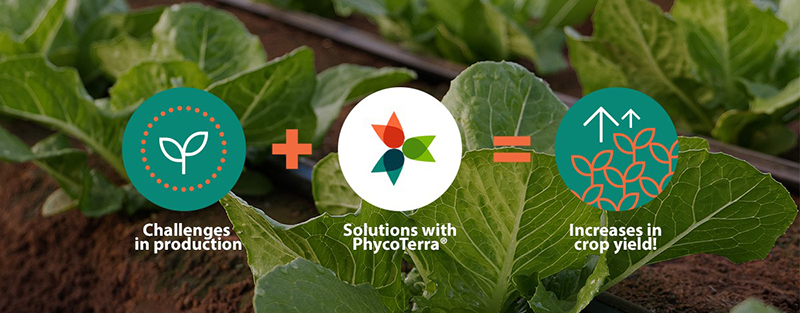How a Big Farm Guards its Delicate Ecosystem

Bowles Farming Company thinks if you respect your soil and your people, your crop quality repays you.
This part of the country was formed for farming. “Flat as a pancake,” according to one who works the land, 118 feet above sea level, adjacent to wetlands and irrigation canals, surrounded by orchards, horse properties, marijuana farms, ranches — acres and acres of assorted agriculture.
The City of Los Banos, CA, in the San Joaquin Valley west of Merced, bills itself as being at the crossroads of California. And smack dab in the middle of all of it you’ll find Bowles Farming Company. It has some 12,000 acres along Route 165, home to the family owned-and-operated firm, which has tilled and planted here for six generations.
“The second largest contiguous wetlands in the United States is on the western border of our farm, home to a state wildlife refuge with a combined 160,000 acres of wetland critical for the Pacific Flyway,” says Cannon Michael, leader of the current generation to farm here.
With more than 650 acres of wetland within the Bowles operation itself — adjacent to growing crops that wildlife loves — the Bowles team is learning how to manage agriculture with ecology.
“Telling wildland critters they can look at the greenery, but can’t eat it, doesn’t work because they don’t listen very well,” Michael says.
That challenge has sparked creative discussions about how agriculture and the environment need to work together, he says. And it’s not a recent issue. The Michael family has been keeping that balance for many decades.
“More than a century and a half ago, we figured out the right way to farm — ethically, morally, spiritually, and with the exception of some technical modifications we’ve made over the years, we’ve adhered to that,” Michael says.
Big Farms Really Can Be Ecologically Sound
“When I got to the farm in 1998, we had three crops,” Michael says. “Now we’re at nearly two dozen.”
Bowles now grows 20 different types of crops, both for fresh market and processing. It devotes the two largest blocks of acreage to cultivating processing tomatoes and extra-long staple cotton.
Elsewhere, you’ll find alfalfa for dairies, durum wheat for bread, and a growing variety of field crops ranging from corn and carrots to melons and onions.
So how does Bowles Farming Company live up to its ecological goals? It assesses everything it does and applies softer practices as often as it can.
“We don’t do no-till, but we practice reduced tillage,” Michael says. “[We’re] doing cover cropping, where applicable, and crop rotation, trying to increase organic matter into our soils.”
When an operation is a large as Bowles, any practice isn’t adopted lightly. Implementing them and a few other sustainable methods takes a detailed plan.
“We look for every opportunity to improve our soil health and take our green farm waste and turn it into compost,” Michael says. “The diversity of crop rotation and maintenance of soil health has been helpful in improving our production.”
Water Security in an Unstable State
Because of the farm’s longevity, it has California Senior Water Rights, which guarantees reliable water access.
“We’re probably more water secure than most people are,” Michael says.
At this point, although sprinkler and flood irrigation come into play, drip accounts for about 75% of the farm’s irrigation. That has an impact on more than water conservation.
“The investment in drip technology has resulted in improvements in our tomato quality and yield,” he says.
Drones Have Surprisingly Wide-Ranging Uses
Drone technology is making operating the farm efficiently and sustainably an easier task. Bowles is looking at them as a strategic tool.
“I’ve used satellite imagery for a long time, but we’re exploring the usefulness of drones and have been successful in some applications, like detecting field leaks in our drip irrigation,” Michael says. “Once the canopy grows up, it’s difficult to pinpoint problems; but drones with thermal cameras can find the flaws that need fixing.”
Because of their eagle eyes, drones are helpful in other areas. For one, they help detect pests at an early stage. They are proving to be a reliable tool, accurately locating plants affected by a pest outbreak.
One surprising use of drones helps with bookkeeping.
“When we transplant tomatoes, we get charged by the number per acre actually transplanted, and with a high-resolution drone, we can actually count the number of transplants done so we can verify we’re being accurately charged.”
The team can use many types of imagery to solve a variety of problems. Take hand-held apps that track all farm activities or mobile devices (iPads or phones) that access their desktop computers.
“Supervisors schedule work and are notified when it’s completed. Then that data is tagged for reference in the next planting. We use all the different kinds of big data we can get from our operations.”
Asked when the robots will come into play, Michael says, “We’re working on that. Hopefully soon, mainly in the area of replacing expensive hand labor with mechanical weeders or automating harvesting of some of our crops like tomatoes and watermelons.”
Adapting to the Future
Bowles Farming Company has watched others come and go over the decades while they have kept marching forward, rock solid. How is the operation fostering that kind of longevity?
“It boils down to our lengthy history and an understanding that this is a cyclical business with a lot of challenges,” Michael says. “Ultimately, you need to respect your soil and the people who maintain it. And while the past is important, you have to be able to adapt to an ever-changing future.”
Michael adds growers who want to build a farm that will last through the generations must combine a clear rear-view mirror vision coupled with a long, forward-looking lens.
“Because of our history, we recognize challenges will always be there and we need to stay energized to rise to meet them,” he says. “As farmers, it’s our mission to do the right thing in the correct fashion to provide food and fiber for the future.”










